

Nova Gorica
Nova Gorica cannot simply be regarded as one of smaller cities in Slovenia, even though it is classified as such on a national scale, in accordance with the population statistics (17,084). It can only be understood in the cross-border context of a multi-cultural urban conurbation consisting of Nova Gorica (“New Gorizia”), Šempeter-Vrtojba and Gorizia (in Italy). On a Slovenian statistical scale, it comes right after Ljubljana and Maribor. Hence, in the Slovenian Spatial Development Strategy Nova Gorica is placed among urban centres of national significance.
This cross-border centre is also a regional centre. The Province of Gorizia (Provincia di Gorizia, Italy) and the Goriška statistical region (Slovenia) together cover a very diverse and economically interesting area. They are connected by the Soča/Isonzo river that extends from the Alpine region, flows across the Karst Plateau and the plains until it finally meets the sea. This territory comprises hilly, sparsely populated areas, with exceptional natural qualities, extending to Monfalcone, the northernmost port of the Adriatic Sea.
In the past, Gorizia was among the biggest promoters of Slovenian economy and culture (e.g. the “Trgovski dom” building in Gorizia, designed by the architect Max Fabiani). It was also one of the central leisure and recreation areas of the Austro-Hungarian Empire, also known for its cultural diversity (the languages used were Italian, Slovenian, German, and Friulian). Due to a combination of natural, cultural, and, not least, economic reasons, the need to connect was always present, and collaboration was always there, despite the so-called iron curtain. Nowadays, the Slovenian minority in Gorizia is one of the main drivers of territorial integration and cultural dialogue.
For historical reasons, the areas of Gorizia, Nova Gorica, and Šempeter-Vrtojba had double infrastructure (sport centres, regional hospital, public utilities, transport infrastructure, etc.). Despite its generally negative connotations, the border was, in fact, a powerful generator of economic development (price differences, logistics platform of the customs area, different regulatory framework regarding gambling services, excise duties, etc.). Following the elimination of the border, the city faced major development challenges in the sense of the so-called “sewing” of the urban fabric, i.e. in the light of the development objectives pursued.
Over the years, the co-operation progressively took on a central role in the economic, social, and infrastructural redevelopment of the area.
The collaboration was formalised after Slovenia’s declaration of independence, and even more after the accession of Slovenia to the EU. This was followed by the initiatives to establish a cross-border office and the project involving the collaboration of three administrations. The establishment of the European Grouping for Territorial Cooperation (EGTC) builds on all the efforts invested so far, on the fundamentals brought about by the new European legislation. The Convention on the establishment of the European Grouping for Territorial Cooperation was officially signed by the mayors of the founding municipalities on 19th February 2010 in Gorizia. The Slovenian Government approved the establishment of the EGTC in June 2010, and the Italian Government in May 2011. The EGTC was registered as a legal entity on 15th September 2011. The first Assembly meeting of the newly established EGTC was held on 3rd February 2012.
The cooperation in the culturally and administratively diverse environment calls for great efforts of the administrations, and a subtle understanding of the cultural character of the area. It is difficult to maintain appropriate relationships in the representation of the various cultures, which must be able to recognise themselves in all the activities connected with the management of the area. This is also a question of promoting equality within diversities, which are definitely regarded as beneficial; however, the process is very demanding in the sense of finding and developing solutions in all areas.
Area of spatial planning
For the conurbation, the multi-cultural aspect of architecture is highly important, and also one of the key generators of spatial identity. Indeed, we must not forget how and why Nova Gorica, as a separate entity, was created and the importance of the preservation of the diversity in identity of the common conurbation in a globalising world.
The importance of architecture and urban design was recognised by the City Municipality of Nova Gorica in its Annual Culture Programme adopted by the City Council in July 2014.
The questions that the conference PLACES AND TECHNOLOGIES 2015 addresses are the central focus of the conurbation in the framework of the EGTC; indeed, in the next period, the conurbation must take the basic steps towards a joint spatial management. Human health, ecology and innovation are key topics of the EGTC GO strategic document, and are developed in three thematic interdisciplinary projects:
-
THE SOČA/ISONZO – establishment of the Soča/Isonzo Cross-border Park (tourism, recreation, drainage, green areas of the conurbation)
-
CROSS-BORDER HEALTHCARE SERVICES
-
The restructuring of the customs border area into a REGIONAL LOGISTIC CENTRE.
The first two projects will be financially supported by the Cross-border Cooperation Program Italy – Slovenia 2014-2020.
The envisaged operation and the strategic goals of the EGTC fully coincide with the central themes of the PLACES AND TECHNOLOGIES 2015 conference, which represent an opportunity to upgrade the current approach, building on the knowledge of other environments and the exchange of good practices. This is a great opportunity for us to extend our knowledge and establish a wider context of co-operation with the institutions that are the generators of development in individual fields and, as such, are of key importance for the conurbation area. At the same time, the conference participants are given the opportunity to see how relevant problems are addressed on a concrete example, and to develop guidelines for the continued operation of the EGTC GO.
The conference will be part of the activities organised on the occasion of the 150th anniversary of birth of the architect, innovator, philosopher, and multicultural humanist Max Fabiani (in the framework of the conurbation), who distinguished himself in the post-war reconstruction projects of the devastated area of Goriška, and the Posočje region (the area along the Isonzo river), in the aftermath of the Isonzo Front (the year 2015 marks the 100th anniversary of Italy’s entry into the war with the Austro-Hungarian Monarchy and the beginning of the Isonzo Front). His designs (Gorizia, Šempeter, Vrtojba and Solkan, directly in the conurbation) technologically modernised the town planning in the region.
Matej ARČON, Mayor of the City Municipality of Nova Gorica

All photos on this page are curtesy of: Arhiv MONG
County Building
View of Nova Gorica
View of Nova Gorica
Nova Gorica
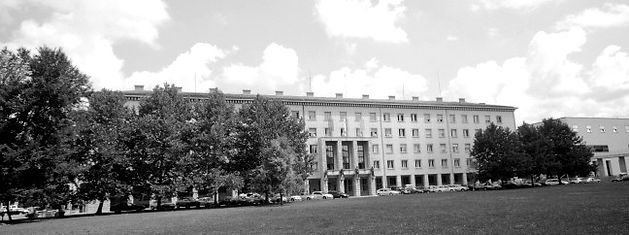
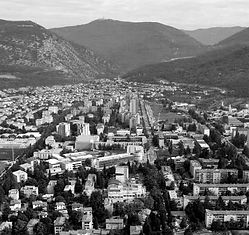
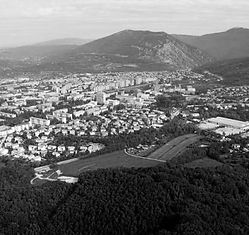

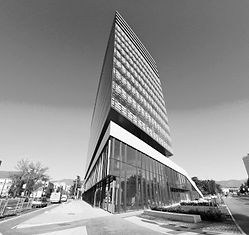
County Building Park
Eda Center
Perla by Night
Perla Conference Center
Perla Conference Center
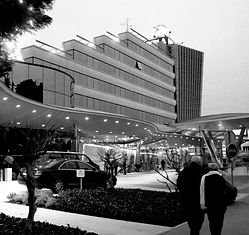
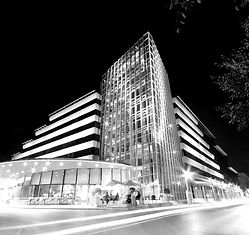
Castle Kromberk
Solkan Bridge
Sveta Gora
Castle Rihemberk
Nova Gorica sorroundings
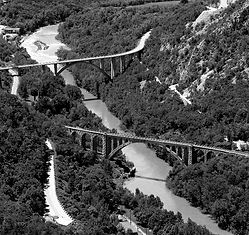
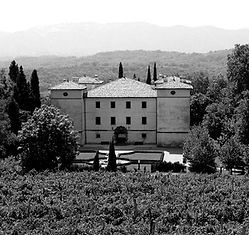


© 2014 by GROMarch


